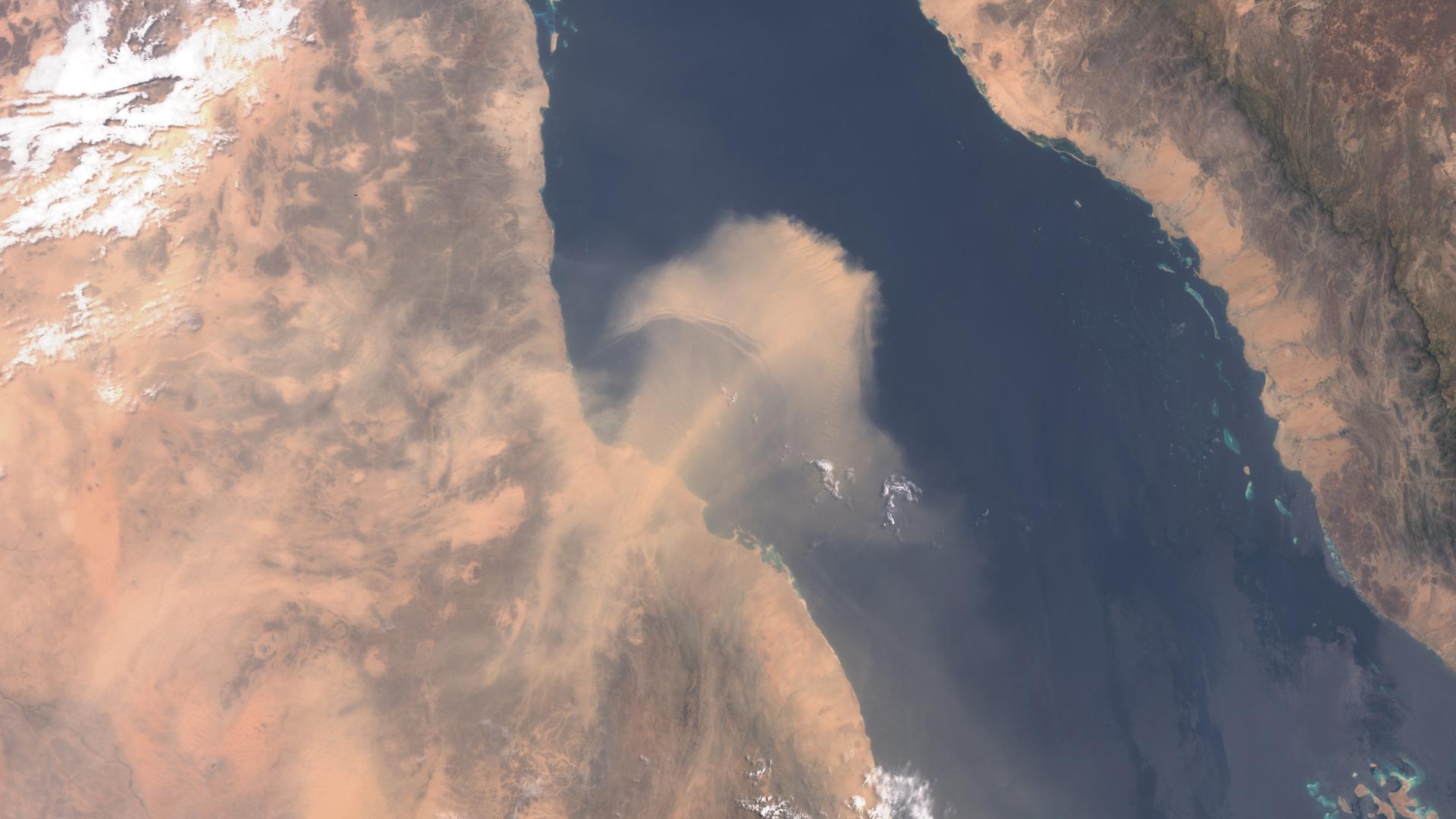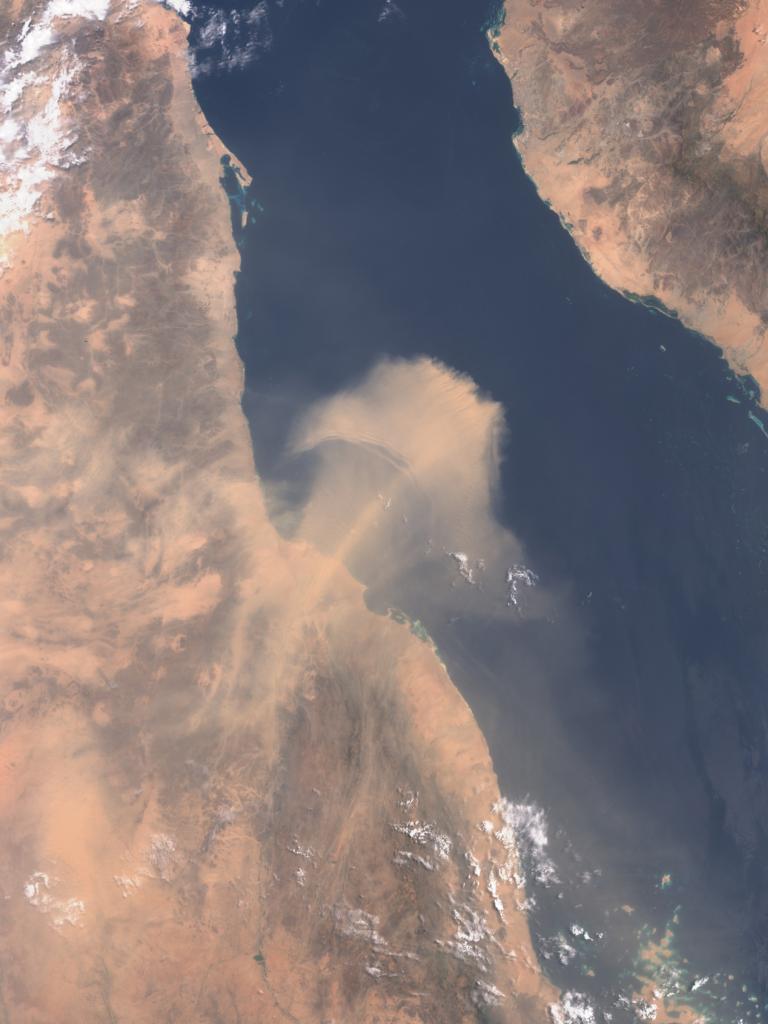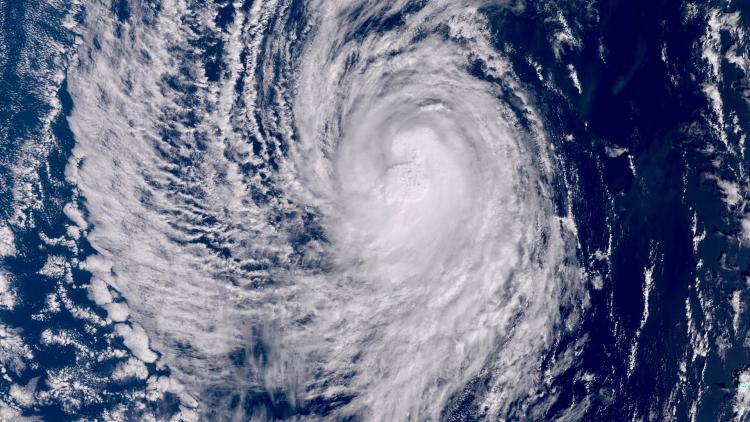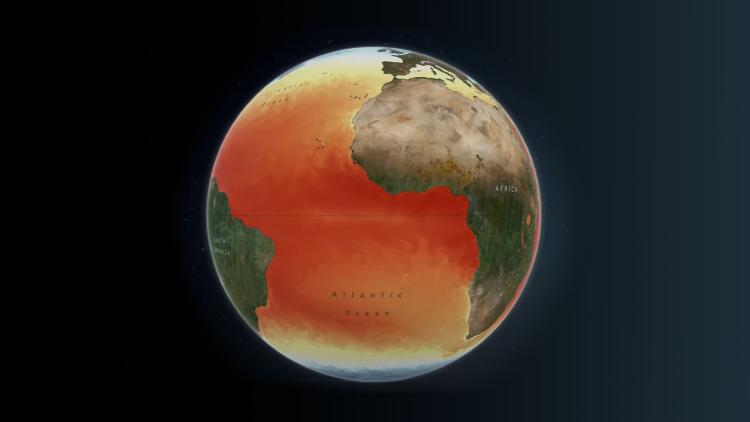This week’s image of the week focuses on Saharan dust moving across the Red Sea towards Saudi Arabia.
Desert dust particles are lifted into the atmosphere by gusts of surface wind and can be transported and deposited thousands of kilometres away.
When dust travels over populated areas, it can reduce air quality and impact health by causing respiratory problems and cause flight delays.
The image was captured by one of the two Copernicus Sentinel-3 satellites.
The Sentinel-3 satellites are in a near-polar, sun-synchronous orbit at an altitude of 815 kilometres, and they are designed to monitor the Earth's oceans, land, ice, and atmosphere.





